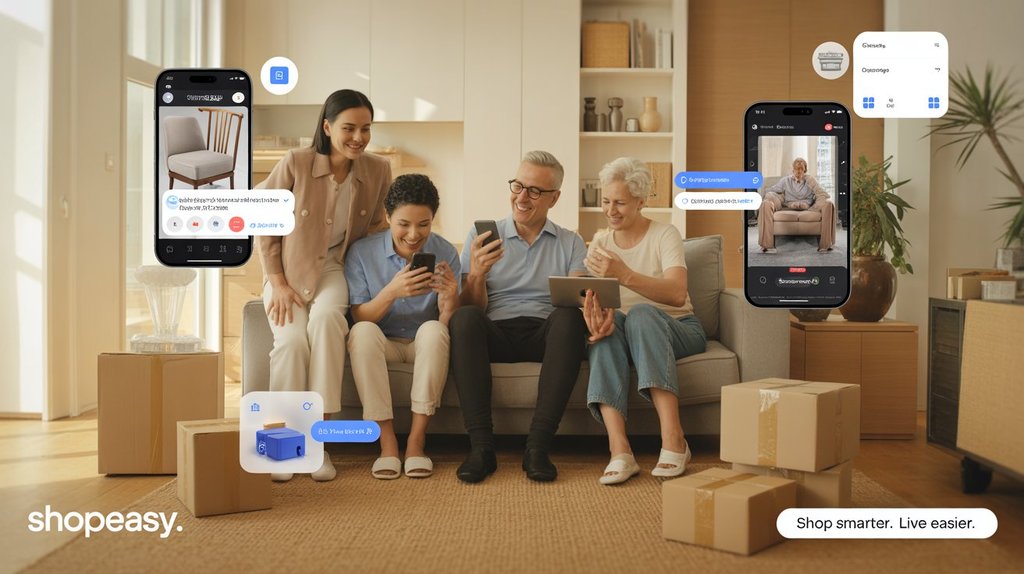Digital Shopping: The Revolution of Modern Commerce
Introduction
We live in a world where technology evolves at lightning speed, and one of the biggest shifts it has brought is the way we shop. Gone are the days when we had to visit physical stores to buy what we need. Today, shopping is just a few clicks or taps away—anywhere, anytime. As more people turn to the internet to fulfill their shopping needs, it’s essential to understand how digital shopping works and how to take full advantage of it.
What is Digital Shopping?
Digital shopping, often referred to as e-commerce, is the act of buying and selling goods or services online. It includes browsing products, comparing prices, reading reviews, and completing payments digitally. Whether it’s through websites, mobile apps, or even social media, online platforms have become powerful tools for both businesses and consumers.
The Evolution of Digital Shopping
The Early Days
Digital shopping had humble beginnings in the 1990s with the launch of the first online bookstore—what would later become Amazon. Back then, internet access was limited, and people were hesitant to enter their credit card information online due to security concerns.
The Big Boom
The explosion came with the rise of smartphones and better user experiences. Secure payment options like PayPal and Stripe increased trust, while features like fast shipping and daily deals encouraged more people to buy online.
The AI Era
Fast forward to today, and artificial intelligence (AI) plays a major role. From personalized product recommendations to chatbots that handle customer service, AI helps retailers create a more efficient and customized shopping experience. Data analytics also allows brands to understand customer behavior like never before.
Benefits of Digital Shopping
Unmatched Convenience
One of the biggest reasons people love online shopping is the convenience. You can browse thousands of products from the comfort of your couch, place an order in seconds, and have it delivered to your door—no long lines, no traffic.
Wide Variety and Choices
Online stores offer a massive range of products, often more than what you’d find in physical stores. Plus, you can easily compare prices between different sellers and read real customer reviews before making a decision.
Exclusive Discounts and Deals
E-commerce platforms regularly offer discounts, coupons, and exclusive sales—especially during events like Black Friday and Cyber Monday. Many also have loyalty programs that reward frequent shoppers with points, cashback, or gifts.
Challenges of Digital Shopping
Security and Privacy
While online security has improved greatly, some people still worry about fraud, scams, or data breaches. Reputable platforms are always enhancing their encryption and safety protocols to protect users.
Product Quality Concerns
One of the biggest risks of online shopping is not being able to touch or try the product. Sometimes, what you receive doesn’t match the photos or description. That’s why having a clear return policy and checking reviews is so important.
Delivery Delays
Shipping can sometimes take longer than expected, especially during peak seasons or in remote areas. Fortunately, many companies are investing in better logistics to speed up delivery times.
The Future of Digital Shopping
Voice Shopping
With smart assistants like Alexa, Siri, and Google Assistant, voice-activated shopping is becoming a reality. Soon, you might order your groceries just by speaking a command.
AR and VR Experiences
Imagine virtually placing a new sofa in your living room or trying on a dress without stepping into a fitting room. Augmented reality (AR) and virtual reality (VR) are set to revolutionize how we shop online by letting us interact with products in realistic ways.
Hyper-Personalized Experiences
As AI continues to advance, online shopping will become even more personalized. Retailers will use your browsing and purchase history to suggest products you’re likely to love, saving you time and making your experience more enjoyable.
Tips for Safe Digital Shopping
- Stick to Trusted Websites: Always check for security seals (like HTTPS), read customer reviews, and avoid shady-looking sites.
- Use Strong Passwords: Protect your financial accounts with complex, unique passwords.
- Check Return Policies: Make sure you know your options if the product isn’t what you expected.
- Be Cautious with Too-Good-To-Be-True Deals: If something seems suspiciously cheap, it could be a scam.
Conclusion
Digital shopping has completely changed the way we interact with the marketplace. It's no longer just an option—it's the new normal. As technology continues to evolve, we can expect even more exciting changes in how we shop, connect, and do business.
Whether you're a casual shopper or a business owner, staying informed about these changes can help you make smarter decisions and stay ahead of the curve. Embrace the digital revolution, and make it work for you.

